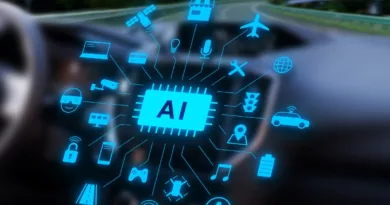The emergence of artificial intelligence (AI) and machine learning (ML) technologies presents both opportunities and challenges. As organizations harness the power of AI to enhance their cybersecurity defenses, cybercriminals are also leveraging AI to launch more sophisticated and targeted attacks. In this article, we will explore the intersection of cybersecurity and AI, examining the potential benefits of AI-driven security solutions as well as the new threats posed by malicious use of AI.
The integration of AI and ML technologies into cybersecurity operations has the potential to revolutionize the way organizations detect, prevent, and respond to cyber threats. AI-powered security solutions can analyze vast amounts of data in real-time, enabling organizations to identify and mitigate threats more effectively than ever before. By leveraging AI algorithms, security teams can detect anomalies, identify patterns, and predict potential cyber attacks with greater accuracy and speed.
AI-driven security tools can enhance threat intelligence capabilities, enabling organizations to proactively identify and address emerging threats before they escalate into full-blown cyber attacks. By continuously analyzing data from a variety of sources, including network traffic, endpoint devices, and user behavior, AI-powered security platforms can provide organizations with actionable insights and recommendations to strengthen their defenses and mitigate risk.
The proliferation of AI in cybersecurity also introduces new challenges and risks. Cybercriminals are increasingly leveraging AI and ML technologies to develop more sophisticated and targeted attacks that evade traditional security measures. For example, AI-powered malware can adapt and evolve in real-time, making it difficult for traditional antivirus software to detect and mitigate.
The democratization of AI tools and techniques means that even relatively unsophisticated cybercriminals can now leverage AI to launch attacks at scale. From spear-phishing campaigns to credential stuffing attacks, AI-driven cyber attacks are becoming increasingly prevalent and difficult to defend against.
Another concern is the potential for AI-powered attacks to cause widespread disruption and damage. For example, AI-driven deepfake technology can be used to create highly convincing fake videos and audio recordings, which can be used to spread disinformation or manipulate public opinion. Similarly, AI-powered botnets can orchestrate large-scale DDoS attacks, overwhelming networks and causing service outages.
To address these challenges, organizations must adopt a proactive and holistic approach to cybersecurity that incorporates AI-driven security solutions, robust threat intelligence capabilities, and a culture of cybersecurity awareness and vigilance. This includes investing in AI-powered security tools and technologies, such as advanced threat detection systems, anomaly detection algorithms, and automated incident response platforms.
Furthermore, organizations must prioritize cybersecurity training and education to ensure that employees are aware of the latest cyber threats and best practices for preventing and responding to attacks. By empowering employees to recognize and report suspicious activity, organizations can create a human firewall that complements their technical defenses. Also, collaboration and information sharing among organizations, government agencies, and cybersecurity researchers are essential to effectively combatting AI-driven cyber threats. By sharing threat intelligence and collaborating on joint initiatives, organizations can strengthen their collective defenses and stay one step ahead of cybercriminals.
The intersection of cybersecurity and AI presents both opportunities and challenges for organizations seeking to protect their data, assets, and reputation from cyber threats. While AI-powered security solutions have the potential to revolutionize threat detection and response, they also introduce new risks and vulnerabilities that must be addressed. By adopting a proactive and holistic approach to cybersecurity that incorporates AI-driven security tools, robust threat intelligence capabilities, and a culture of cybersecurity awareness, organizations can enhance their resilience to evolving cyber threats and safeguard their digital assets in an increasingly interconnected and AI-driven world.








